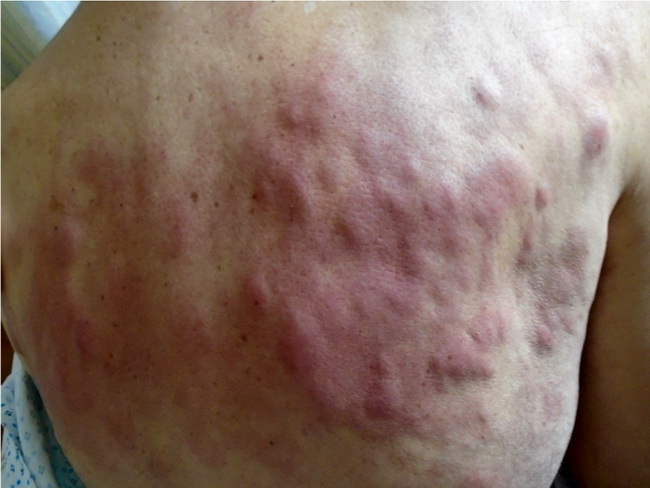AITL : Clinical Features


Comments:
Clinical Features: Angioimmunoblastic T-cell lymphoma (AITL) is a disease of middle-aged and older patients with a peak incidence in 6th and 7th decades of life. The diagnosis is often suggested based on the unique set of symptoms and signs. Most cases present with generalized lymphadenopathy, hepatosplenomegaly, and constitutional symptoms (fever, weight loss, malaise). Cutaneous involvement is seen in 20%-50% of cases of AITL generally in the form of non-specific maculopapular rash. Uncommonly, the skin lesions are raised, papulonodular and mimic urticaria as shown in this image. Edema of the upper extremities and face, pleural effusion, ascites, and arthritis are seen in one-third of patients. Coombs-positive hemolytic anemia and polyclonal hypergammaglobulinemia are also commonly present. A small number of patients have plasmacytosis or eosinophilia. The clinical course is often complicated by intercurrent infections with conventional or opportunistic pathogens secondary to the immunodeficient state. Abnormal laboratory tests include: presence of cold agglutinins, circulating immune complexes, anti-smooth muscle and antinuclear antibodies, positive rheumatoid factor, and cryoglobulins. Image copyright: Mohleen Kang, MD, et al. Reference: Angioimmunoblastic T-cell Lymphoma Mimicking Chronic Urticaria. Case Reports in Medicine. Volume 2016; Article ID 8753235, 5 pages. https://doi.org/10.1155/2016/8753235; Used under Creative Commons Attribution License.



